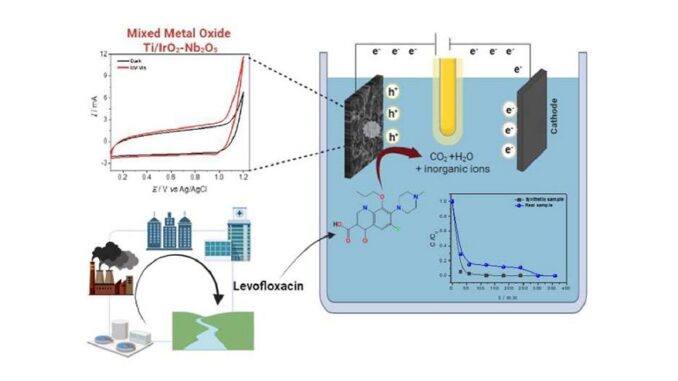
Transforming Levofloxacin into Biodegradable Byproducts
Levofloxacin is a commonly used antibiotic that is prescribed to treat a variety of illnesses, including urinary tract infections, skin disorders, bacterial prostatitis, pneumonia, pyelonephritis, and infections of the rhinosinusitis and skin structure.
Related Stories
Levofloxacin is highly toxic and may have endocrine-disrupting effects; its environmental effects are especially harmful when used widely. Scientists from various universities and establishments in São Paulo state, Brazil, have collaborated to devise strategies for extracting it from aquatic settings or transforming it into low-toxicity biodegradable byproducts.
The study, which was supported by FAPESP, produced excellent results by using an electrode made of films of iridium dioxide and niobium oxide on a titanium substrate to degrade the antibiotic in both simulated and real water samples.
The research was published in the journal Electrochimica Acta.
The modified Pechini method was utilized to obtain the films, and following morphological, structural, and electrochemical characterization, the electrode was employed to degrade the antibiotic through various processes, such as electrolysis and photoelectrolysis.
The substance had a sizable electrochemically active surface area and demonstrated good photoelectrocatalytic activity and stability. The outcomes were deemed to be extremely satisfactory and held great promise for the treatment and elimination of organic pollutants from water.
Lucia Helena Mascaro, Co-Principal Investigator at the Center for Development of Functional Materials (CDMF), a researcher at the Center for Innovation in New Energies (CINE), and Professor at the University of São Carlos (UFSCar) is also among the other authors of the study.
Established by FAPESP at UFSCar, CDMF is a Research, Innovation, and Dissemination Center (RIDC). CINE is an Engineering Research Center (ERC) funded by FAPESP and Shell.
Journal Reference:
Fernandes, C. H. M.., et al, (2024) Effective photoelectrocatalysis of levofloxacin antibiotic with Ti/IrO2-Nb2O5 in environmental samples. Electrochimica Acta. doi:10.1016/j.electacta.2023.143586.
Source: https://agencia.fapesp.br/en

